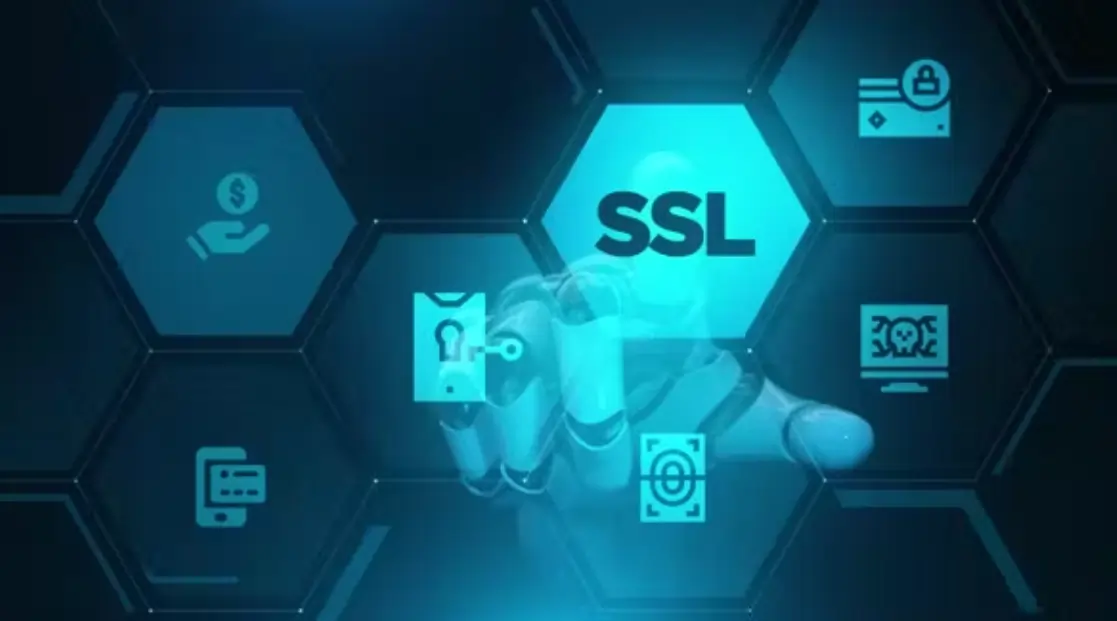Security is a crucial part of any online activity. Potential and existing internet users must do business within a trusted user data secure environment to feel safe and confident. This is where an SSL certificate issued to a website comes in. It initiates a secure connection, securing user data between parties on the internet, complete with a visual guarantee (EV indicators) like the familiar green padlock.
What is SSL?
SSL means Secure Sockets Layer. It is a security protocol that provides a secure and encrypted link to ensure all information passing between the web server (backend) and the web browser (front end) is secure. It has existed for over 25 years, and even though it is still called SSL, it has been updated and renamed to Transport Layer Security (TLS).
How do SSL certificates work?
When users visit a website protected by an SSL protocol, their browser initiates a secure connection with the server. The server presents the SSL/TLS certificate containing the website’s public key. The user verifies the certificate’s authenticity by checking if a trusted Certificate Authority issued it. If the digital certificate is valid, the browser and server establish an encrypted connection using the website’s public key.
SSL encryption
This public-private key encryption ensures that sensitive information, such as login credentials or financial data, is securely transmitted between the browser and the server, protecting it from unauthorized access or interception by malicious actors. Users can view the standard SSL certificate in their web browsers, by tapping the green padlock in the URL.
The need for an SSL certificate
An SSL certificate is crucial for every website. It helps verify data, prove domain ownership, protect users, guarantee trust, and prevent hacking. Here are the top reasons to get an SSL certificate for your website;
- Encrypted channels
- Authentication
- Ownership of an HTTPS web address
Information found on a Certificate Authority SSL certificate
An SSL certificate contains information that verifies a site’s identity and authenticity. This information includes;
- The domain name
- The name of the business it was issued to
- The name and digital signature of the issuing CA
- Associated subdomains
- Issue date of the certificate
- The validity period of the certificate
- The public key
Types of SSL certificate
Depending on their preferences, different types of SSL certificates are available to every website owner. There are two main categories to consider. The authentication and encryption category includes the extended, organization, and domain certifications, while the Domain number category has wildcard, single, unified communications, and multi-domain SSL certificates.
Extended Validation certificates (EV SSL)
This most expensive SSL certificate shows the highest visual authentication and encryption levels. An EV SSL certificate offers elevated legitimacy because the certificate shows the popular padlock in the green address bar alongside the HTTPS marker, the business name, and the country of operation. The Extended Validation certificate is ideal for businesses or ecommerce websites that require identity assurance, data collection, and secure online transactions.
Organization Validated certificates (OV SSL)
The OV SSL provides medium-level encryption for websites. This certificate also guarantees that the organization and domain validation name of the used domain are real. For this level of authenticity, the certificate shows the organization’s name in the address bar alongside a little green padlock as proof of legitimacy.
Domain Validated certificates (DV SSL)
Not all websites require advanced authentication or can afford them. The DV certificate is a good option which secures the domain name and the certificate verifies its ownership while offering encryption. DV certificates are easily obtained and feature the green padlock; however, they do not secure the subdomains of the business, only the domain.
Wildcard SSL certificates
This cost-effective SSL/TLS certificate for websites with several domains removes the need to purchase multiple certificates. A Wildcard applies to all other websites related to the initial SSL secured website. For example, it would cover subdomains like get.help.com and blog.help.com if the main domain is help.com.
Multi-Domain SSL Certificate (MDC)
This certificate can cover multiple domain names. It can be any encryption certificate, except it covers up to 100 domains with the same owner. These names can also be altered for easy management using the Subject Alternative Name (SAN) option.
Unified Communications Certificate (UCC)
Unified Communications Certificates are also considered a type of multi-domain certificate. It was originally designed to secure Microsoft Exchange and Office Communications servers but is now used to secure multiple domains on one certificate.
Self-signed SSL certificate
You can use your own private key to create SSL certificates for your website. To do this, they must generate a public-private key and load all the necessary information onto it. The single-domain SSL certificate is an easy and affordable way to encrypt a site; however, browsers do not recognize these certificates as trustworthy, as there is no authority to verify ownership or the origin server. They may flag these sites as malicious or “not secure”.
Free SSL certificates
It is possible to secure your website and get the traffic encrypted without spending a dime. Cloudflare, a popular web security company, offers free SSL encryption. Domain owners must simply sign up on the platform and select their preferred option.
Obtaining an SSL certificate
Getting a valid SSL certificate is easy. A trusted third party called a Certificate Authority (CA) issues and authenticates valid certificates. The Certificate Authority’s digital signature is appended using their public and private keys. This way, clients can verify the server’s SSL certificate with their devices.
These types of SSLs come at a cost; however, there are also free ones. The certificate must be installed on an HTTPS web address and triggered on the website’s origin web server (website hosting), after which the traffic to and from the site or web server becomes encrypted.
SSL certificate used on multiple servers
As mentioned above, some SSL certificates can be used on multiple servers. They include Wildcard, Multi-domain, and Unified Communications SSL certificates. The number of servers permitted depends on the certificate authorities; however, Wildcard is usually unlimited.
Secure Sockets Layer (SSL) certificate expiration
Technically, your SSL certificate would remain valid for about 13 months before it expires. This is not something to worry about, as your vendor will notify you periodically as the expiration date approaches.
Checking if a site has an SSL certificate
It is easy to determine whether you are having an SSL-encrypted session by checking the URL address bar;
- It must have an HTTPS URL and not an HTTP one.
- It must have a green locked padlock icon which you can click on to get the security details of the site. Open padlocks or red-locked padlocks are proof that the site is not secure.
Ensuring your online session is safe
Cybersecurity is no joke, and everyone must always remain cyber-conscious. Here are ways to look out for your online safety;
- Ensure you read the privacy policy of any unfamiliar website
- You should never submit personal or financial data to sites that do not have OV or EV SSL certificates. Look for the organization’s name in the browser address bar or by tapping the padlock for the latter.
- Look out for badges or logos from other credible sites.
Looking beyond the lock
Previously, the little green padlock was enough to determine whether a site was secure and safe to browse. However, this is no longer the case. Scammers can also purchase SSL certificates, so ensure you are cyber-conscious before dropping your personal or financial data on any website.







